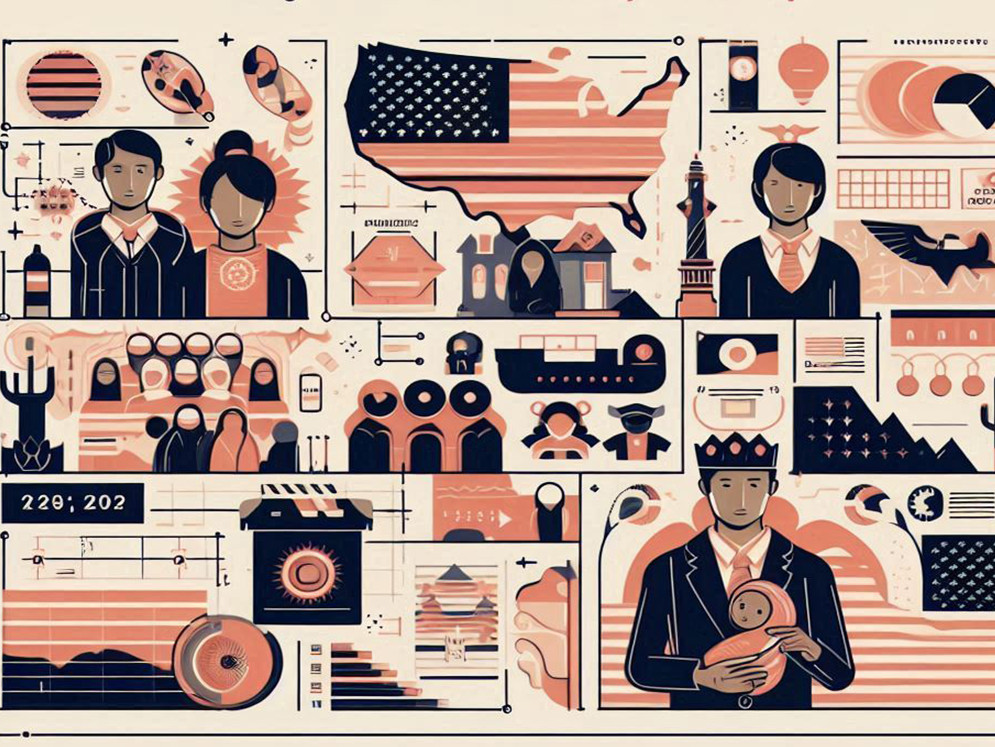Every year, thousands of people become US permanent residents, and their journey is shaped largely by where they come from. Understanding which countries contribute the most to this influx of new residents offers valuable insight into global immigration patterns over time. A closer look at data from fiscal years 2013 to 2022 reveals significant trends, showing how different nations impact U.S. immigration.
People migrate to the U.S. for a variety of reasons—some seek political stability, others pursue better economic opportunities, while many are motivated by family connections. By examining these factors, we can gain a deeper understanding of not only immigration as a whole but also the evolving diversity within American communities.
This article dives into the statistics surrounding lawful U.S. permanent residents, focusing on how these numbers tie back to countries of origin. You’ll discover key trends in immigration and what these shifts might signal for the future.
Key Insights
- Analyzing these patterns offers a glimpse into potential future immigration trends.
- Countries of birth play a critical role in influencing residency status.
- The data spans fiscal years 2013 to 2022, highlighting notable shifts over the decade.
Let’s explore the immigration trends from four key countries: India, Pakistan, Bangladesh, and Nepal. By examining the numbers, we can see how immigration patterns have evolved in these nations over the years.
India
India consistently ranks among the top countries with the highest number of individuals gaining U.S. permanent residency. From 2013 to 2022, the number of Indian nationals securing this status saw a steady rise.
In 2013, around 30,000 Indians became permanent residents. By 2022, this figure had climbed to nearly 50,000. Much of this growth can be attributed to employment-based visas, particularly in categories like EB-2 and EB-3, which are reserved for skilled workers and professionals. Family reunification also plays a key role, with many Indian immigrants joining relatives already settled in the U.S. This highlights the importance of education and professional qualifications among Indian applicants.
Pakistan
Pakistan also remains a significant contributor to U.S. immigration, though the growth in numbers has been more gradual.
In 2013, about 15,000 Pakistani nationals obtained green cards. By 2022, this number had risen to around 20,000. Many Pakistani immigrants gain residency through family-sponsored visas and employment-based categories, reflecting the importance of family ties and educational opportunities. Younger professionals from Pakistan, in particular, often seek better career prospects in the U.S., adding to the diversity of applicants.
Bangladesh
Immigration patterns from Bangladesh present a slightly different story, with fluctuations over the years.
In 2013, around 10,000 Bangladeshi nationals were granted permanent residency. By 2022, this number had grown to roughly 15,000. The reasons for this growth are varied, ranging from family reunification to increased opportunities in fields like healthcare and technology. Bangladeshi immigrants frequently pursue family-based immigration, joining relatives who have already established lives in the U.S.
Nepal
Nepalese immigration to the U.S. has seen steady growth during this period, reflecting both family and educational motivations.
In 2013, approximately 7,000 Nepalese nationals became permanent residents, a number that grew to about 11,000 by 2022. This increase can be linked to the expansion of visa options and more cases of family reunification. A significant portion of Nepalese immigrants come to the U.S. for higher education and, after completing their studies, transition to permanent residency.
Looking Ahead
These immigration patterns tell a larger story about how global shifts—economic, political, and social—are influencing who comes to the U.S. and why. As immigration policies continue to evolve, understanding these trends will be crucial in predicting future flows of new residents and the changing face of American communities.







Leave a Reply